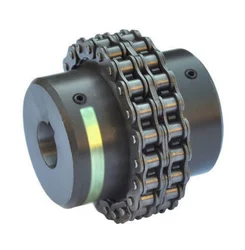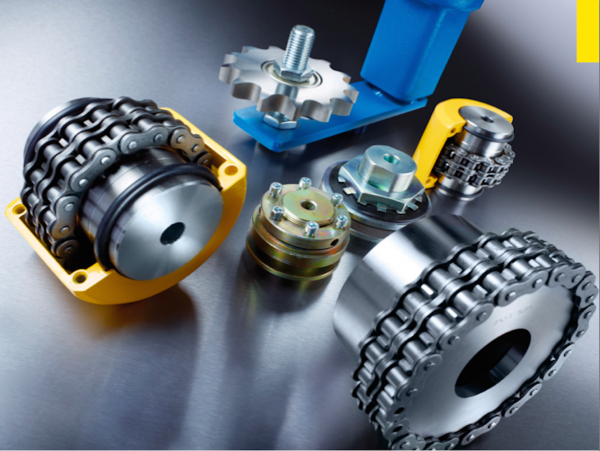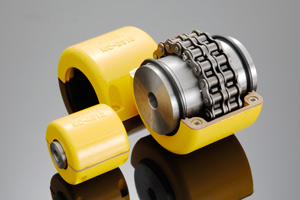وصف المنتج
وصف المنتج
معلمات المنتج
| منتج | وصلات سلسلة الأسطوانة المسننة المرنة المصنوعة من الفولاذ المصبوب من سلسلة Kc لمقاعد الاختبار |
| مادة | الفولاذ المقاوم للصدأ والحديد والألومنيوم والبرونز والفولاذ الكربوني والنحاس الخ. |
| مقاس | معيار ISO ومتطلبات العملاء |
| عطوف | غلاف التمدد Z1/Z2/Z3/Z4/Z5/Z6/Z7/Z8/Z9/Z10/Z11/Z12/Z13/Z14/Z18/Z19 |
| الملل | تم الانتهاء من الثقب، ثقب تجريبي، طلب خاص |
| معالجة السطح | التكرير والتبريد، والتصلب، والتصلب العالي لسطح الأسنان، والتصلب |
| طريقة المعالجة | القولبة، الحلاقة، التثقيب، الحفر، الصنبور، التوسيع، الشطب اليدوي، الطحن وما إلى ذلك |
| المعالجة الحرارية | Quenching & Tempering, Carburizing & Quenching, High-frequency Hardening, Carbonitriding…… |
| طَرد | صندوق خشبي/حاوية ومنصة نقالة، أو مصنوعة حسب الطلب |
| شهادة | ايزو 9001، اس جي اس |
| عملية التصنيع | صقل التروس، طحن التروس، تشكيل التروس، صقل التروس، تقشير التروس، شحذ التروس وصقل التروس |
| التطبيقات | الألعاب، والسيارات، والأدوات، والمعدات الكهربائية، والأجهزة المنزلية، والأثاث، والمعدات الميكانيكية، ومعدات الحياة اليومية، والمعدات الرياضية الإلكترونية، وآلات الصرف الصحي، ولوازم معدات السوق/الفندق، وما إلى ذلك. |
| معدات الاختبار | جهاز اختبار صلابة روكويل 500RA، جهاز الشبكة المزدوجة HD-200B & 3102، جهاز مركز قياس التروس CNC3906T وأجهزة الكشف عالية الدقة الأخرى |
ورشة عمل ومعدات
عملية الإنتاج
الشهادات
مميزاتنا
1. الجودة ذات الأولوية
2. الإدارة المبنية على النزاهة
3. التوجه نحو الخدمة
4.150+ معدات متطورة
5.10000+ متر مربع مساحة المصنع
6.200+ موظف متميز
7. يتمتع موظفو 90% بخبرة عمل تزيد عن 10 سنوات في مصنعنا
8.36 موظف فني
9. شهادة ISO 9001 و SGS
10. دعم التخصيص
11. خدمة ما بعد البيع ممتازة
شحن
وقت تسليم الطلبات النموذجية:
10-15 يوم عمل كالمعتاد
15-20 يوم عمل في موسم الذروة
وقت التسليم للطلبات الكبيرة:
20-30 يوم عمل كالمعتاد
30-40 يوم عمل في موسم الذروة
التعليمات
1. لماذا يجب عليك شراء المنتجات منا وليس من الموردين الآخرين؟
نحن شركة تصنيع ذات خبرة 32 عامًا في تصنيع التروس، متخصصة في تصنيع أنواع مختلفة من التروس، مثل التروس الحلزونية والتروس المخروطية والتروس المحفزة وتروس الطحن وعمود التروس وبكرات التوقيت والرف وبكرات التوقيت وأجزاء ناقل الحركة الأخرى. يوجد أكثر من 150 جهازًا متقدمًا، وأكثر من 200 موظف ممتاز، و36 موظفًا فنيًا. علاوة على ذلك، حصلنا على شهادة ISO9001 وSGS.
2. هل تقبل الطلبات الصغيرة؟
إذا كان طلبك هو حجم المحامل القياسية لدينا، فنحن نقبل حتى 1 قطعة.
3. ما هي مدة التسليم؟
ج: الطلبات الصغيرة عادة ما تستغرق 10-15 يوم عمل، والطلبات الكبيرة عادة ما تستغرق 20-35 يومًا، اعتمادًا على كمية الطلبات وما إذا كانت بحجم قياسي.
/* March 10, 2571 17:59:20 */!function(){function s(e,r){var a,o={};try{e&&e.split(“,”).forEach(function(e,t){e&&(a=e.match(/(.*?):(.*)$/))&&1

هل يمكن لوصلات السلسلة أن تستوعب عدم المحاذاة الموازية؟
نعم، تم تصميم وصلات السلسلة لاستيعاب درجة معينة من عدم المحاذاة الموازية بين الأعمدة المتصلة. يشير عدم المحاذاة الموازية إلى الموقف الذي لا يتم فيه محاذاة محاور العمودين بشكل مثالي وتعمل بالتوازي مع بعضها البعض ولكن على مسافة.
تتمتع وصلات السلسلة ببعض المرونة المتأصلة التي تسمح لها بتحمل قدر معين من عدم المحاذاة الموازية. يتم توفير المرونة بشكل أساسي من خلال سلسلة الأسطوانة، والتي يمكنها تعويض النزوح الموازي الصغير بين الأعمدة. تساعد هذه المرونة في تقليل الضغط على مكونات الوصلة وتسمح بالتشغيل السلس حتى في وجود عدم محاذاة موازية.
ومع ذلك، من المهم ملاحظة أن وصلات السلسلة لها حدود من حيث عدم المحاذاة الموازية. يمكن أن يؤدي عدم المحاذاة الموازية المفرط إلى ما يتجاوز الحدود المحددة إلى زيادة الإجهاد، وتوزيع الحمل غير المتساوي، والتآكل المتسارع، وفشل الوصلة المحتمل. يجب اتباع مواصفات الشركة المصنعة وإرشاداتها لضمان بقاء عدم المحاذاة الموازية ضمن النطاق المقبول لوصلة السلسلة المحددة المستخدمة.
يعد المحاذاة الصحيحة أثناء التركيب أمرًا بالغ الأهمية لتقليل عدم المحاذاة المتوازية. يجب محاذاة الأعمدة بشكل وثيق قدر الإمكان لضمان الأداء الأمثل وطول عمر وصلة السلسلة والآلات أو المعدات المتصلة بها. في بعض الحالات، قد تكون التدابير الإضافية مثل الحشوات أو الحوامل القابلة للتعديل ضرورية لتحقيق المحاذاة المطلوبة.
كما أن الفحص والصيانة المنتظمة لوصلات السلسلة مهمان أيضًا لتحديد ومعالجة أي مشكلات تتعلق بعدم المحاذاة المتوازية والتي قد تنشأ بمرور الوقت. إذا تم اكتشاف عدم محاذاة متوازية كبيرة، فيجب اتخاذ تدابير تصحيحية لإعادة محاذاة الأعمدة أو النظر في خيارات الوصلات البديلة الأكثر ملاءمة لمتطلبات عدم المحاذاة المتوازية.
باختصار، يمكن لوصلات السلسلة أن تستوعب درجة معينة من عدم المحاذاة المتوازية، ولكن يجب تجنب عدم المحاذاة المفرط. يعد المحاذاة الصحيحة أثناء التركيب والالتزام بإرشادات الشركة المصنعة أمرًا ضروريًا لضمان الأداء الأمثل والموثوقية وطول العمر لوصلات السلسلة والآلات أو المعدات المتصلة بها.

How to install a chain coupling?
Proper installation of a chain coupling is crucial for ensuring its optimal performance and longevity. Here are the steps to follow when installing a chain coupling:
-
Prepare the Work Area: Before beginning the installation, ensure that the work area is clean and free from any debris or contaminants. This will help prevent any damage to the coupling components during installation.
-
Inspect the Components: Carefully inspect the chain coupling components, including the sprockets, roller chain, connecting pins, and bushings or bearings. Check for any signs of damage or wear. Replace any components that are worn or damaged.
-
Position the Coupling: Position the coupling on the shafts that need to be connected. Ensure that the shafts are aligned properly and the coupling is centered between them.
-
Install the Sprockets: Slide the sprockets onto the shafts, with the teeth facing each other. Make sure the sprockets are securely seated on the shafts and aligned with each other.
-
Connect the Roller Chain: Loop the roller chain around the sprockets, ensuring that it is properly engaged with the sprocket teeth. Connect the ends of the roller chain using the connecting pins. Insert the connecting pins through the pin holes in the chain links and secure them with retaining clips or other fasteners.
-
Tension the Chain: Adjust the tension of the roller chain to the manufacturer's specifications. The chain should have the appropriate amount of slack to allow for smooth operation and accommodate misalignment but should not be too loose or too tight. Follow the manufacturer's guidelines for determining the correct chain tension.
-
Secure the Bushings or Bearings: If the chain coupling uses bushings or bearings, ensure they are properly installed in the bores of the sprockets and provide a secure and smooth rotation of the shafts.
-
Apply Lubrication: Apply the recommended lubricant to the roller chain and sprockets. Proper lubrication is essential for reducing friction, wear, and noise, and it helps ensure smooth operation of the chain coupling.
-
Check Alignment and Rotation: Once the chain coupling is installed, check the alignment of the shafts and the rotation of the coupling. Verify that the coupling rotates smoothly without any binding or interference.
-
Inspect and Test: After installation, thoroughly inspect the entire chain coupling assembly. Look for any signs of misalignment, unusual noise, or vibration. Test the coupling's operation by running the machinery at a low speed and gradually increasing to the normal operating speed. Monitor the coupling for any issues or abnormalities.
Following these installation steps will help ensure a proper and secure installation of the chain coupling, promoting efficient power transmission and minimizing the risk of premature failure or damage.

What are the advantages of using chain couplings?
-
Flexible and Reliable Connection: Chain couplings provide a flexible and reliable connection between rotating shafts. They can accommodate misalignment between the shafts, including angular, parallel, and axial misalignments. This flexibility helps to reduce stress on the shafts and bearings, resulting in smoother operation and extended equipment lifespan.
-
High Torque Capacity: Chain couplings are capable of transmitting high torque loads. The positive engagement between the sprocket teeth and the chain rollers allows for efficient power transfer, making them suitable for applications that require the transmission of substantial rotational forces.
-
Mechanical Protection: Chain couplings act as mechanical protection by providing a breakable link in the power transmission system. In case of sudden overloads or jams in the system, the chain can break, preventing damage to the machinery components. This feature helps to protect expensive equipment and minimizes downtime for repairs.
-
Misalignment Compensation: Chain couplings can compensate for misalignment between the connected shafts. They can tolerate angular misalignment, where the shafts are not perfectly aligned at an angle, parallel misalignment, where the shafts are offset from each other, and axial misalignment, which refers to displacement along the axis of the shafts. This ability to accommodate misalignment helps to prevent excessive stress and premature wear on the shafts and bearings.
-
Wide Range of Applications: Chain couplings are versatile and find applications in various industries and machinery. They are used in conveyors, pumps, crushers, mixers, industrial drives, and many other systems. The ability to handle different torque requirements, speed variations, and misalignment conditions makes chain couplings suitable for a wide range of power transmission needs.
-
Easy Maintenance: Chain couplings are relatively easy to maintain. Regular lubrication of the chain and sprockets helps to reduce friction and wear, ensuring smooth operation and extending the life of the coupling. Maintenance tasks such as chain tensioning and inspection can be carried out without requiring complex tools or specialized training.
In summary, the advantages of using chain couplings include their flexible and reliable connection, high torque capacity, ability to compensate for misalignment, mechanical protection, wide range of applications, and ease of maintenance. These features make chain couplings a preferred choice in various industries where efficient power transmission and reliable operation are vital.


editor by CX 2024-01-10
